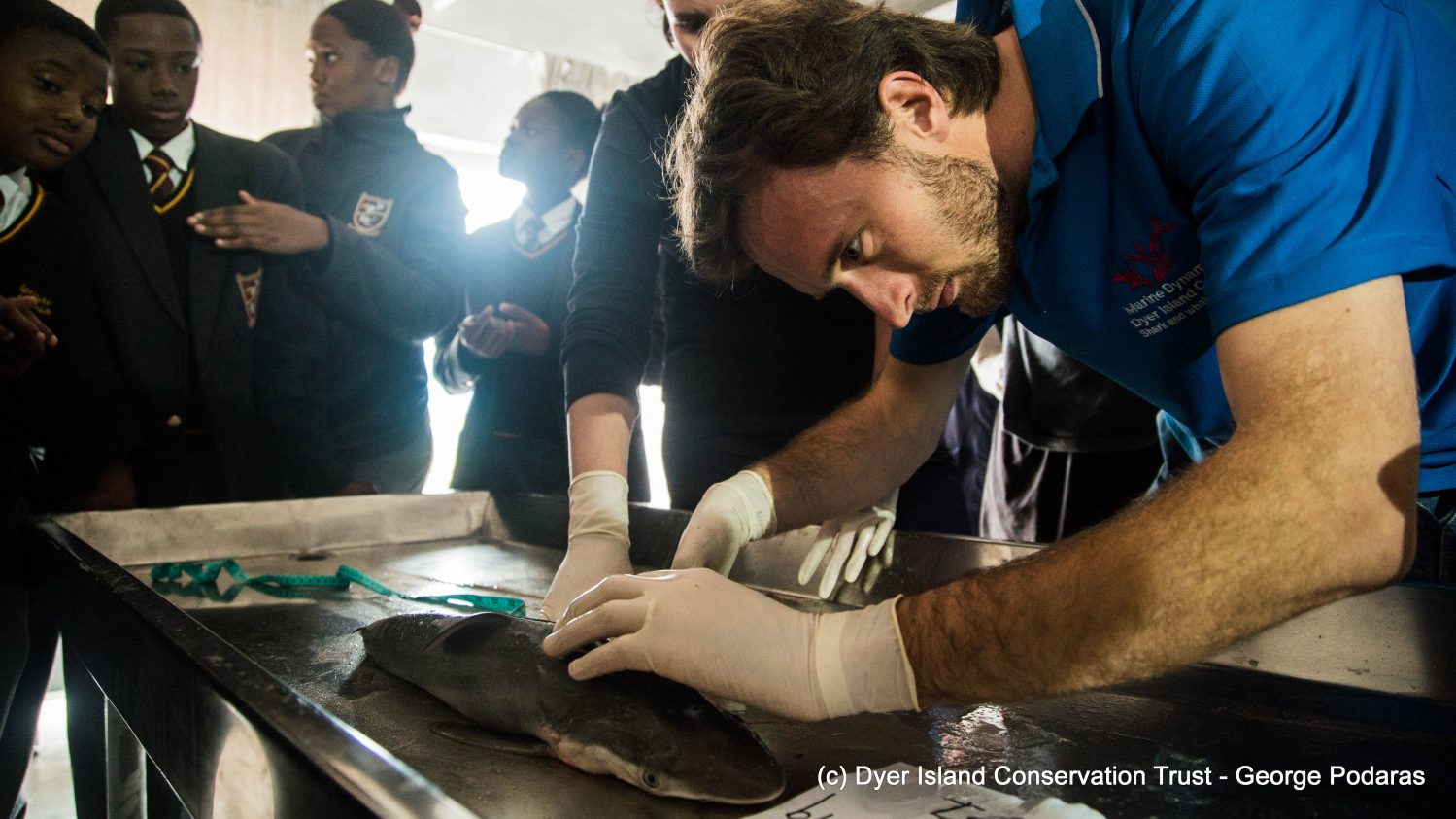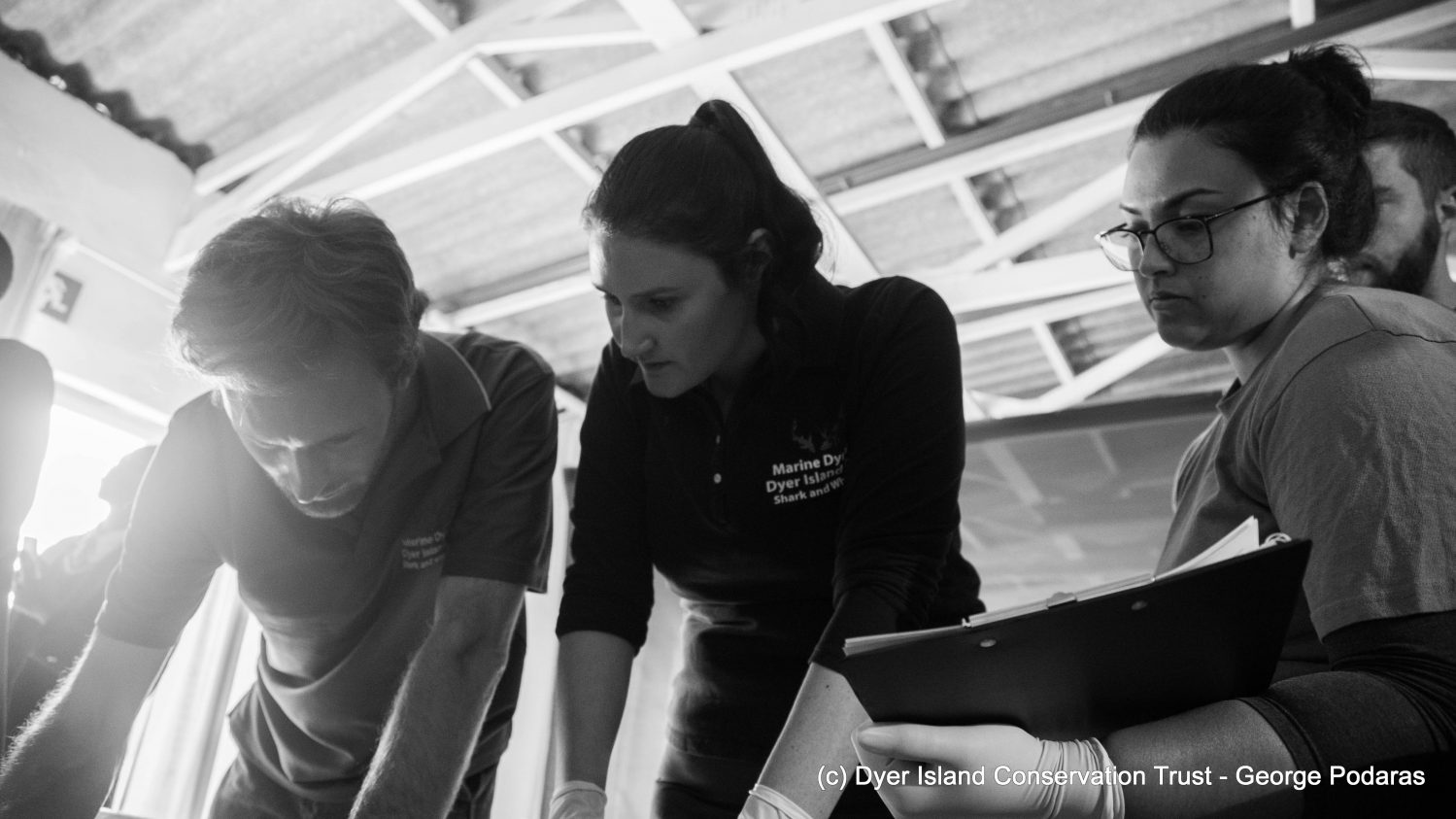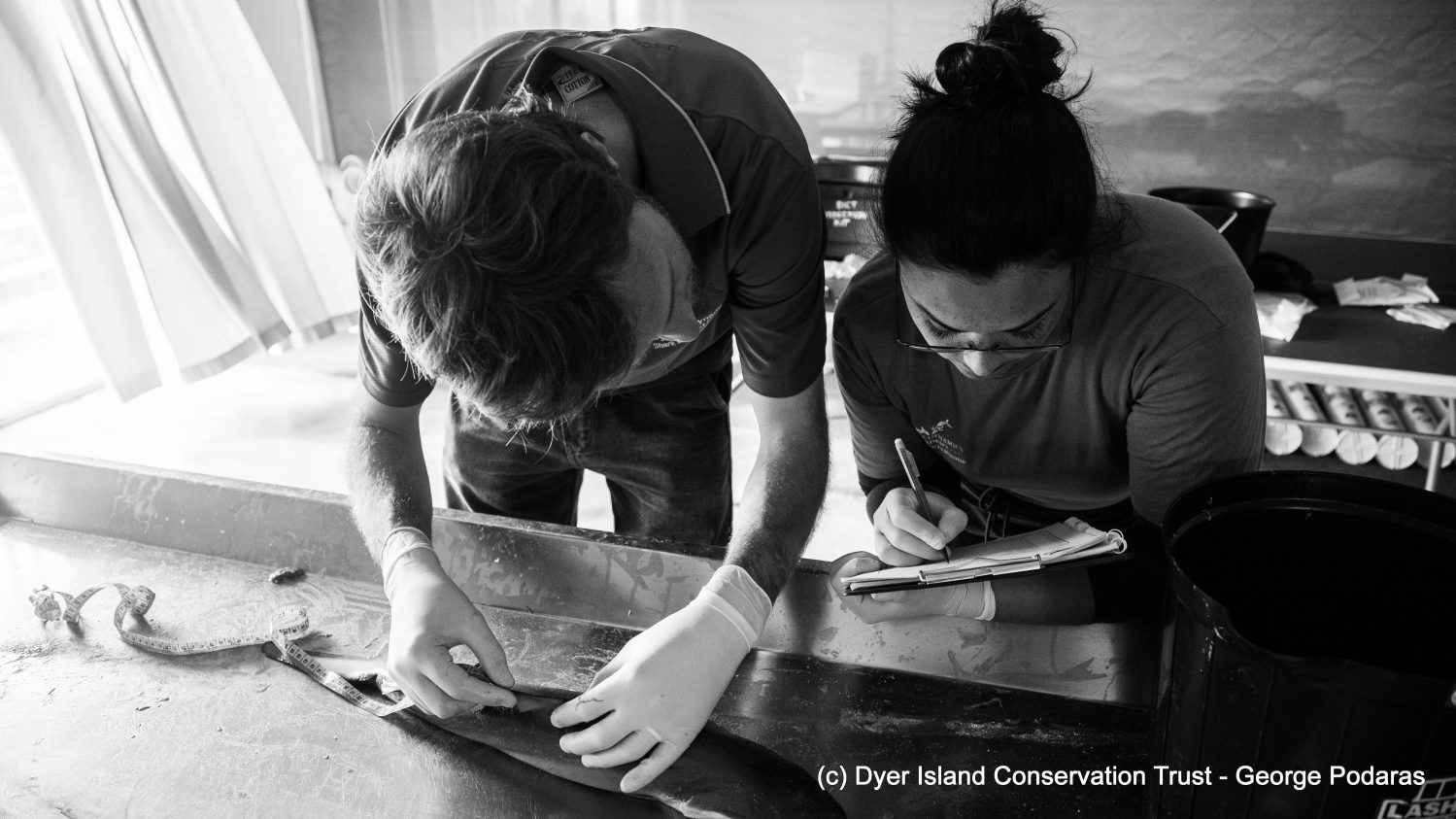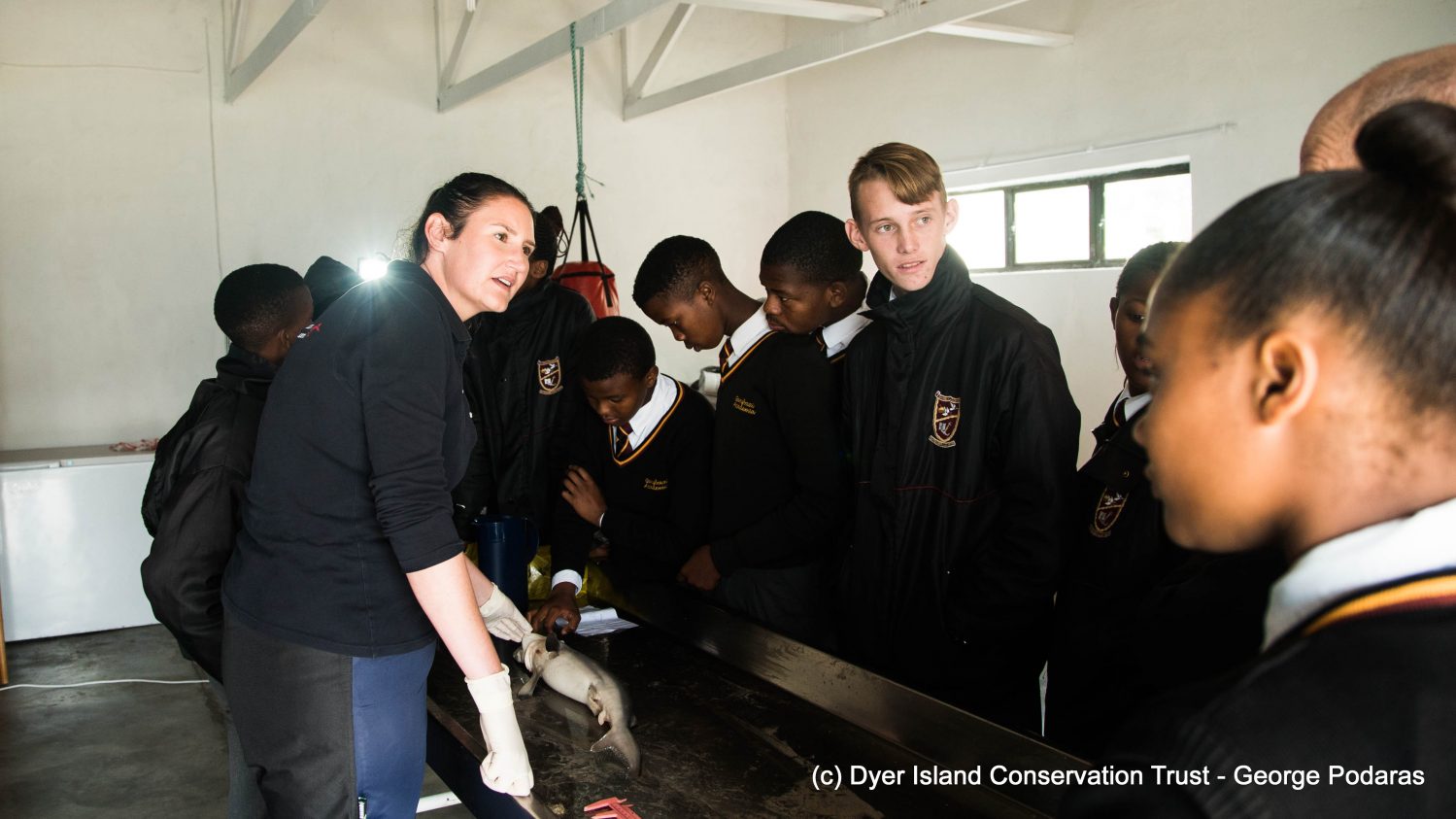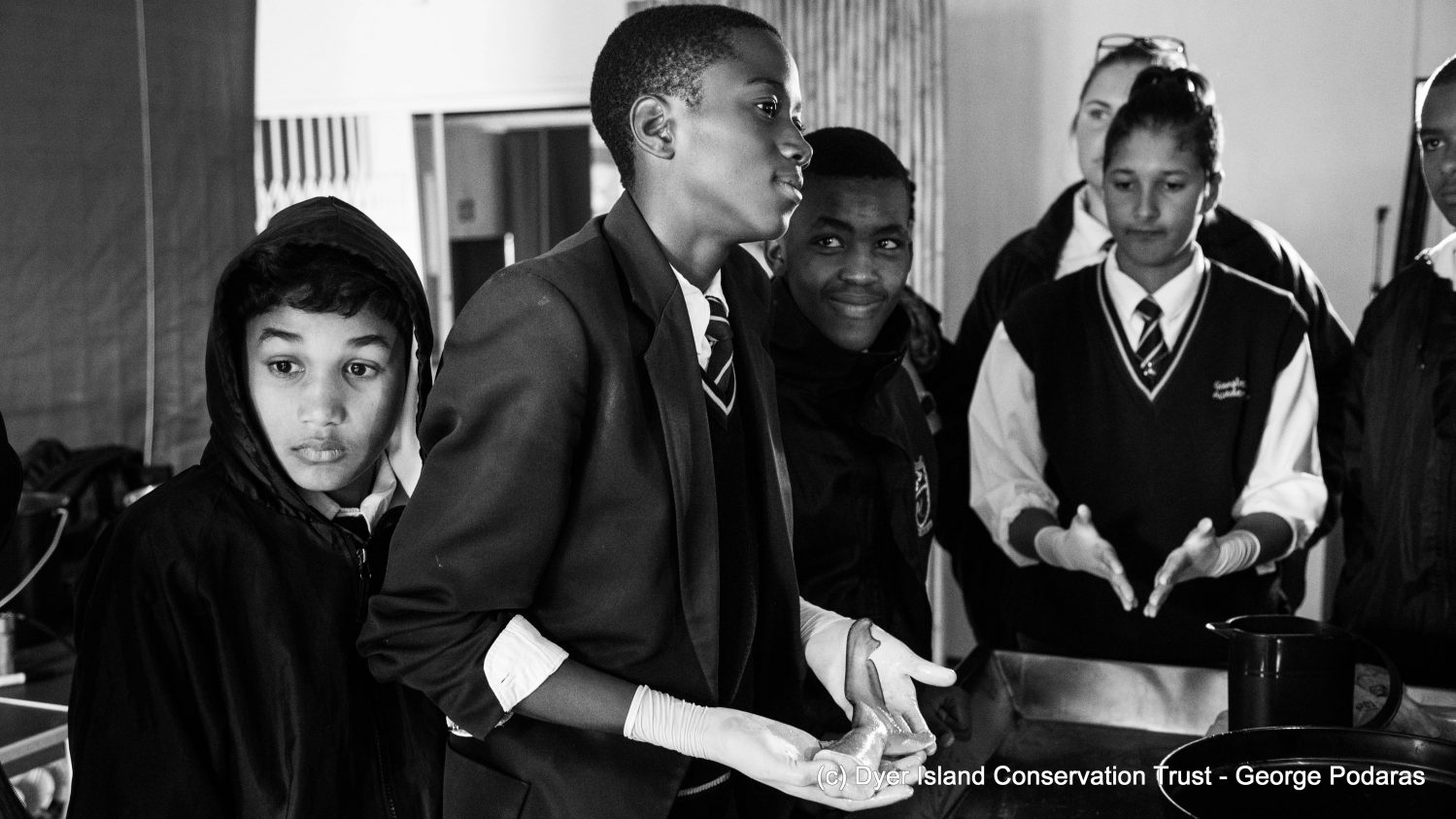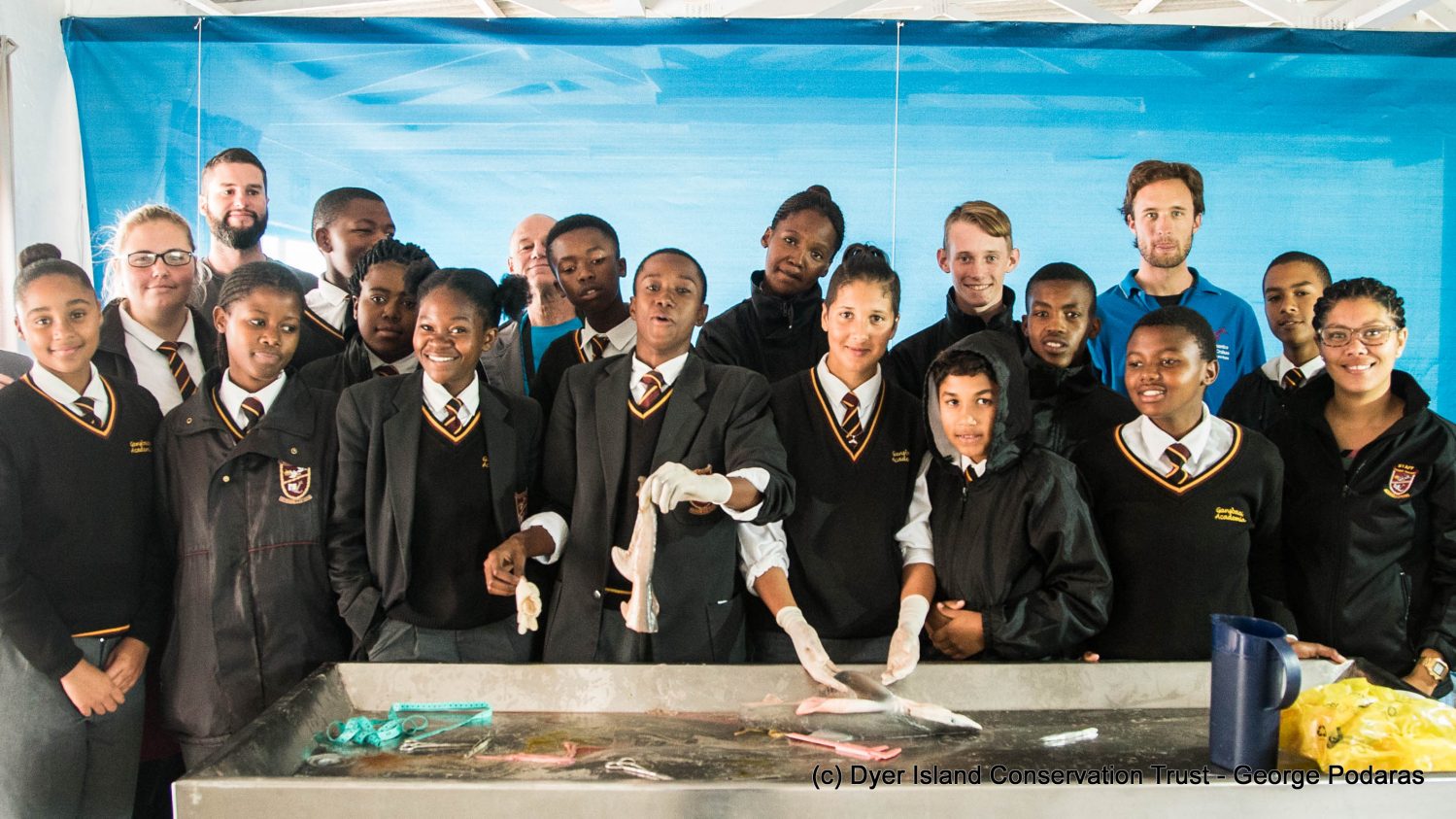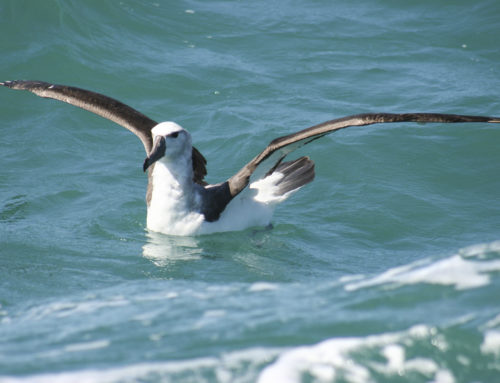May 19, 2019 Dyer Island Conservation Trust
On the morning of Thursday the 16th of May, the Dyer Island Conservation Trust team and Marine Dynamics Academy intern Jade Sookhoo conducted a necropsy at the International Marine Volunteer Lodge on a prenatal bronze whaler shark (Carcharhinus brachyurus). This shark was part of a litter of 12 pups collected from a pregnant female bronze whaler that was found stranded on De Plaat on the 5th of March, 2019. (See link to previous DICT blog on discovery and collection).
The necropsy was performed in the presence of a group of learners from Gansbaai Academia, as part of their Marine Science curriculum, together with teacher Lizelle Carolus and Xavier Zylstra from Two Oceans Aquarium.
The necropsy process is a lengthy one, even for a specimen so small, and starts with an extensive array of external examination including a large collection of measurements of size and form before the first incision is made. This quantitative data is of great importance as it can reveal many things to us and be used to support and complement the classic taxonomic identification or reveal a new species when discrepancies are discovered in these measurements.
This was the first time DICT examined a prenatal specimen. The female pup, which was in the later stages of development, measured a total length of 67.5cm and weighed in at 1.85kgs. Bronze whalers reproduce viviparously: just like humans the embryo is attached to a placenta by an umbilical cord, and is still dependent on nutrients from the mother. As a result of this, the stomach was still empty, and the spiral valve lacked their signature folds.
The gestation period of bronze whalers is still uncertain, but research suggests the female carries the pups for a duration of approximately 12 to 21 months. Based on the development of the pup, we think she was perhaps weeks away from being born.
The Dyer Island Conservation Trust collaborates with various researchers around the country and value the sharing of data to further expand our knowledge base. Apart from collecting fin-clipping samples for genetic analysis, we also isolated both gill-sets for parasite analysis, and the whole head for a project that analyses the neurological network of sharks.
During the necropsy, the learners from Gansbaai Academia asked our scientists loads of questions about sharks, and they learned a lot about why we do these measurements, about shark physiology, and how sharks work internally.
A special thanks to Janine Taylor, Anthony Fouche and Marcelino Henckert for reporting original stranding of the sharks and to the Marine Science programme team at Gansbaai Academia for being part of the necropsy.


